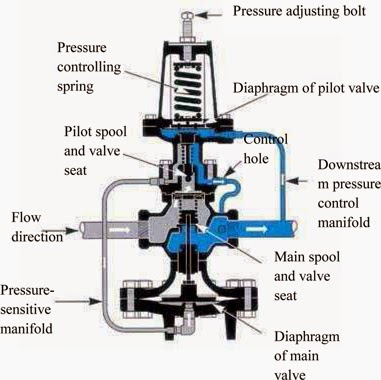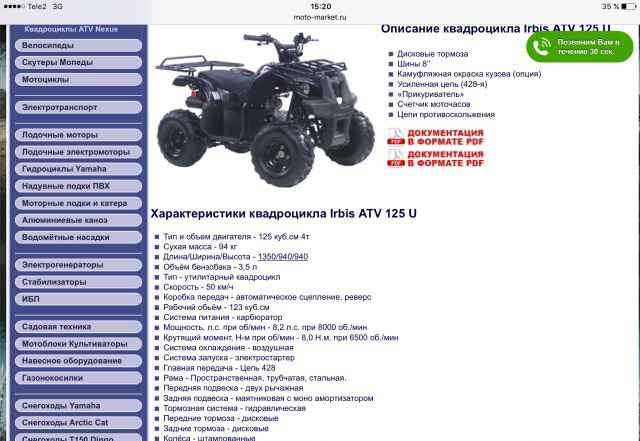Don’t know how to clean the valves without removing the head?
Since the carbon deposits on the engine valves restrict airflow increasing the operating temperature. Thus, damaging the engine. Therefore, it becomes essential to clean valves for better functioning.
So, in this article I will share with you my experience how to clean valves without removing the head easily.
It is necessary to ensure safety and, in the process, to clean the valve without removing the head. We use the valve cleaner on the running engine. So, it would be best if you protect yourself from burning. Moreover, the fluid may enter your eyes, making glasses necessary while cleaning the valve. Earlier, I used to get a lot of injuries and burns while cleaning without these safety gears. So, sharing my experience, I want to state that it’s essential to include safety gear while doing these things.
If you want a clean valve without removing the head, you need to have your engine at the operating temperature. So, start the engine and on the dashboard, check the temperature from the temperature gauge. Moreover, if the temperature gauge shows temperature between cold and hot, consider your engine at operating temperature.
It is mandatory to remove the plastic cover of an air filter to get access to the MAF sensor. The air filter cover is near the engine, and its duct travels from the front of the car into the engine. Moreover, to remove the air filter outside, loosen the hose clamps on both sides and remove the wing nuts. However, sometimes wing nuts may be absent. You may also clean or replace the air filters if needed. But, in my opinion, it would be best if you replace the air filter with a brand new one as they are not that expensive.
NOTE: Keep all the loose parts safely after opening as you will need to resemble an air filter cover afterward.
In my opinion, it is essential to find out the exact position of the MAF sensor because when you will spray the valve intake cleaner past the MAF sensor. Moreover, you may find the MAF sensor between the airbox and the throttle body.
Whenever I clean my car’s valve, I prefer to revive the engine at approximately 2000 RPM. By doing so, your engine will speed up the combustion process once the engine starts running. However, in my opinion, it would be best if you have someone to assist you behind the steering wheels and rev the engine whenever required.
It would help if you always be attentive while spraying the cleaner. It is the most crucial step as you need to spray cleaning products after the MAF sensor, not in front. However, if you spray the cleaner in front of the MAF sensor, you will see an engine light on the dashboard.
CRC GDI IVD Valve & Cleaner
This cheap product will do the job just fine.
Check price on Amazon
I have a Dodge Dakota and always clean the valves by myself. So, in my experience, when the engine is at rev 2,000 RPM, spray the intake cleaner in 30 seconds until the can is empty. Once cleaning, I felt my Dodge Dakota engine was beginning to stall, and then I got advice to press the gas pedal not exceeding the limit of 3500 RPM. Moreover, following that, I could see spray cleaner clean any carbon deposits on the intake valves. So, if you follow the same step, keep in mind that you are spraying the cleaner at the right place, avoiding the pooling of cleaner in one place. Otherwise, the cleaner could end up in valves triggering error codes on the dashboard with the engine light.
Once you empty the cleaner, start and run the engine idle for one to two minutes without exceeding it to 3500 RPM and then turn the engine off.
After cleaning, now quickly reassemble the air filter cover checking everything.
Step 1: Start your motor and rev it to 2500 RPM
Step 2: Slowly pour water into the intake system
Step 3: The running engine will convert water into steam and clean the valves
You may also try a tiny vacuum and some oven cleaner. Spray the cleaner inside the valve and let it foam up. Further, vacuum it out before running the engine.
Moreover, you may also try Toluene or Xylene in your gas. It helps to burn the valves more and hence, destroy some of the carbon deposits. In addition, use 20% mixture for the tank.
In my experience, using a bench grinder with a wire wheel is the best way to clean valves. This way is easy and no any damage happened. In case you have no grinder, it still works with a metal wire wheel. It may take longer but at least it can get your job done.
After knowing how to clean valves without removing the head, keep in mind a few things to avoid any problem.
Concluding, we have discussed how to clean valves without removing the head. This cleaning is an easy process that includes removing the filter cover and locating the MAF sensor. Following that, rev your engine at 2500 RPM and spray cleaner with caution. Moreover, after cleaning, run your engine idly without exceeding 3500 RPM and reassemble the parts. However, it is necessary to use a suitable substance during the cleaning process to avoid damage in the long run.
However, it is necessary to use a suitable substance during the cleaning process to avoid damage in the long run.
There are some common questions related to how to clean valves without removing the head.
In my opinion, the significant causes for valves to go bad are a distortion of valve seat, deposits on the valve, or burnt and erosion of the valves. For example, when my Dacota’s valve failed, the mechanic told me this might be due to heat fatigue, pitting, or breaks in the valve.
When your car’s valves are dirty, you may notice:
The carbon buildup on the valve is due to oil flow or leaks through valve seats, which layers turn into carbon accumulation. Moreover, carbon buildup is also possible from blow-by gases from the crankcase. In addition, using low-quality mixed fuel may also cause the proliferation of carbon. However, a tiny amount of oil is necessary for lubrication. But when this oil reaches the hot valve, it burns to form a heavy carbon deposit. In addition, with higher mileage, the wear of valve seals will be more. Thus, resulting in depositing black carbon on the inlets of the valve.
Moreover, carbon buildup is also possible from blow-by gases from the crankcase. In addition, using low-quality mixed fuel may also cause the proliferation of carbon. However, a tiny amount of oil is necessary for lubrication. But when this oil reaches the hot valve, it burns to form a heavy carbon deposit. In addition, with higher mileage, the wear of valve seals will be more. Thus, resulting in depositing black carbon on the inlets of the valve.
My advice to avoid these carbon deposits is to change your oil every 3000 miles if you are a short-distance driver. And, on every 5000 miles if you are a highway driver. Moreover, it would be best to clean the valves using a suitable cleaner, taking necessary precautions.
If you have a damaged or broken valve, you will hear some noise from your car. So, with a broken valve spring and worn camshaft lobe, your engine will create a tapping or clicking sound. Moreover, you will hear valve train noise the same as the sewing machine’s clicking sound.
There are many engine valve cleaners popular in the market. But, I would recommend you use products such as CRC GDI intake valve cleaner or BG Gasoline Direct injection cleaner. Moreover, you will find a variety of engine valve cleaners such as:
Deposits can cause exhaust power valves to stick, reducing power and performance.
November 11, 2021
Exhaust power valves automatically vary the exhaust-port opening so your sled can provide good low-rpm throttle response and maximum top-end power. Their placement in the path of exhaust gases over 1,000°F (538°C), however, means hard carbon deposits can form, causing them to stick, reducing engine power and performance. Using a high-quality, clean-burning two-stroke oil helps prevent sticking. So does cleaning them seasonally. Here’s how to clean snowmobile power valves.
Using a high-quality, clean-burning two-stroke oil helps prevent sticking. So does cleaning them seasonally. Here’s how to clean snowmobile power valves.
Tools You Need:
We’re using an engine from a Ski-Doo 800 P-TEK we had available in the AMSOIL mechanical lab for this demonstration, but the basic steps will apply to most snowmobile makes and models.
Remove the plastic covers from the exhaust power valves. They’re typically held on with just two bolts.
Usually just two bolts hold the exhaust power valve cover in place. Remove them to begin the cleaning process.
Now, remove the two bolts that hold the power valve assembly into the cylinder head.
After the cover is off, remove the two bolts that hold the power valve assembly into the cylinder head.
With the exhaust bellows exposed, unthread it by hand and set it aside. Take care not to lose the springs that hold the barrel-shaped side valves in place.
Slide the power valve out of the slot in the cylinder head. Again, take care to avoid dropping parts. If there are excessive deposits, you may have to work it back and forth to loosen and free it from the engine. Set the power valve on a rag.
Carefully remove the exhaust power valve from its slot in the cylinder head.
As already said, the power valves sit in the scalding-hot exhaust stream, meaning they’re prone to collecting carbon deposits, especially if you’re using a low-quality two-stroke oil that doesn’t burn cleanly.
Deposits can cause the valves to stick open or closed, which reduces engine power and performance.
Using a razor blade, carefully scrape off carbon deposits. Be careful to avoid gouging the metal.
Use a razor to scrape the hard carbon deposits from the power valve.
Once you’ve removed the thick deposits, spray carburetor cleaner or a similar product designed to remove deposits, like AMSOIL Power Foam,® on the valves and let them sit for 10-15 minutes. This will help soften the remaining deposits so you can remove them easier.
Use a rag or soft-bristled brush to clean the valve components. Spray another coat of cleaner on them if needed and let them sit. If they’re really dirty, soak them overnight.
Once clean, reinstall the power valves in the cylinder head, thread the exhaust bellows back on and apply the cover. That’s all there is to cleaning snowmobile power valves.
Once cleaned, the power valve is ready for reinstallation.
Most manufacturers recommend cleaning seasonally, but check your owner’s manual for the specific recommendations for your sled.
If your sled begins to run poorly and lack power, dirty power valves could be the culprit. It’s a relatively easy and cheap fix, so start there before trailering your sled to the dealership and dropping a bunch of money.
It’s a relatively easy and cheap fix, so start there before trailering your sled to the dealership and dropping a bunch of money.
Clean them in the spring before storage. This prevents carbon from solidifying over the summer and becoming even more difficult to remove.
Prevention is the best maintenance practice, so use a high-quality synthetic two-stroke oil, like AMSOIL INTERCEPTOR® Synthetic 2-Stroke Oil, that burns cleanly and resists high-heat deposits. It will help prevent the power valves from collecting deposits and sticking, maximizing power and reducing maintenance.
To demonstrate its performance, we put INTERCEPTOR to the test in a rental Polaris* RMK 800 used for a full season in the Canadian Rockies. After a season of abuse, the oil protected the engine and prevented the power valves from sticking.
Check out the full test in the video below.
Shop AMSOIL Snowmobile Products
Adjusting the valves on an ATV is one of the most important maintenance steps. Ignoring this operation will adversely affect the operation of the engine, make it difficult to start the ATV, and even lead to a number of serious breakdowns. Therefore, it is important for the rider to figure out when it is necessary to carry out the adjustment and whether it is worth performing the procedure on their own or it is better to seek help from an ATV store in Kyiv.
Experienced motorists advise adjusting the valves on the ATV immediately after purchasing the equipment. The fact is that when assembling devices (especially Chinese ones), manufacturers do not pay due attention to this procedure. And the operation of ATVs with incorrectly adjusted clearances leads to:
And the operation of ATVs with incorrectly adjusted clearances leads to:
The second clearance setting should preferably be done when the vehicle is running in. That is, after 300-350 km of the way, the rider should check the cylinder head.
Please note: An operation such as adjusting the valves on an ATV is considered a mandatory maintenance item and should be carried out every 1000-1500 km.
Before adjusting the valves, you need to prepare the quadric for the procedure. To do this, it is recommended to raise the front of the ATV. This will clean the cylinder head oil bath and remove excess fluid.
Then dismantle the body parts that make it difficult to get to the valves. However, it all depends on the model of the quadric, in some devices you can get to the cylinder head without removing the plastic parts and assemblies.
The rider also needs to prepare tools: an 8 wrench (better with a head so as not to damage the nuts), measuring probes (you can find them in any auto shop) and a hammer. nine0003
Let the machine cool down before adjusting the ATV's valves. The procedure is performed "cold", so it is better not to start the ATV before adjusting.
In fact, adjustment is a basic operation, so even a novice ATV rider can perform it. The driver only needs:
 nine0010
nine0010  01 mm). If the readings are very different, then adjust the gap with a lock nut and screw. nine0010
01 mm). If the readings are very different, then adjust the gap with a lock nut and screw. nine0010 After making adjustments, start the ATV and observe engine operation. It is possible that at first the device will make a slight tapping sound. However, if the knock is strong, then the valves were not set correctly.
Important: Do not load the ATV heavily after adjustment. Carry out a mini run-in (5-10 km). Also, during the trip, listen to the sounds that the ATV engine makes. nine0028
02/19/2021 4247
Afriso ATV 500 3-way thermal valve is an anti-condensation three-way mixer that is installed to eliminate the temperature difference in the incoming coolant, which causes corrosion of the metal elements of the heating unit and the heating system due to condensation.
Mounted on the boiler return pipe. In this case, it serves to mix hot water into the return circuit. It is also possible to install this thermal valve in operation with a storage tank (buffer) - in this case, the valve works with the boiler until the temperature reaches the temperature set on the valve, then it switches to filling the buffer tank. nine0003
This valve does not require connection to electricity and is non-volatile. Thanks to a well-thought-out design, it is possible to replace, if necessary, the thermostatic element, as well as clean the device from dirt. The body of the three-way mixer is made of CB753S brass, the plug is CW617N (used to clean the valve).
Works with a liquid medium, not only with water, but also with a glycol solution with a concentration of 50%. In the model range there are several temperatures at which the mixture opens: 45°С - 60°С. The range of possible temperature with which this valve operates is from 5 to 95°C, with a maximum pressure of up to 10 bar (maximum differential is 1 bar). The throughput is 12 m 3 /h. On the website of the Protech Plus store, you can buy Afriso ATV DN32.
The throughput is 12 m 3 /h. On the website of the Protech Plus store, you can buy Afriso ATV DN32.
Thanks to the valve, a high temperature of the return heat carrier is always maintained, which increases the efficiency of the heating unit and significantly extends its service life, and also affects the correct operation of the boiler.
Connection diagram Afriso ATV
| Country | Germany |
| Valve type | three way |
| Nominal diameter | DN32 |
| Connecting thread (female) | 5/4" |
| Capacity (kvs), m 3 /h | 12 |
| Opening temperature, °C | 45, 50, 55, 60 |
| Leak through closed valve A-AB | nine0098 max 1% of Kvs|
| Leak through closed valve B-AB | max 3% of Kvs |
| Pressure (max), bar | 10 |
| Body material | brass |
| Operating temperature range, °C | 5-95 |
There are no reviews for this product.